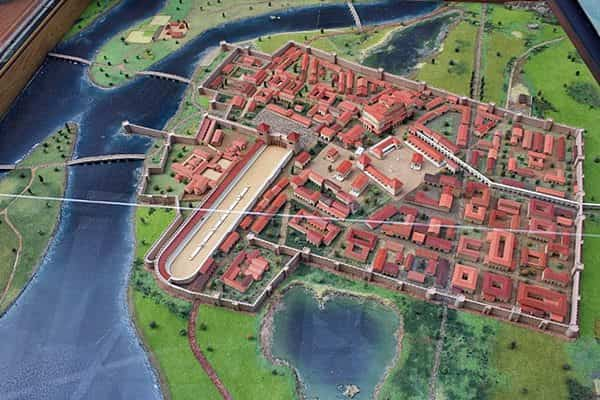
Capture of Sirmium(Sremska Mitrovica) |
year: 580-582 |
| The Avars captured the fortress city securing a base to raid the Balkans | ★ ★ ★ ★ ★ |
|
enemy: Avars
|
location: Sirmium (modern Sremska Mitrovica, Serbia)
|
accuracy:
●●●●●
|
|
battle type: City Capture |
war: Wars against Avars & Slavs |
modern country:
Serbia |
| ▼ The Byzantines(emperor: Tiberius II Constantine) | ▼ The Enemies | |
| Commander: | Unknown | Khagan Bayan Ι |
| Forces: | ||
| Losses: |
| Background story: |
| In 568, the Avars, a people of Turko-Mongolic origin, established a kingdom - khaganate - in Pannonia, an area around the present-day Hungary. In order to do this, they had to cross the Danube areas starting from somewhere north of the Caspian Sea where they were subordinate to the “Blue” Turks or Gokturks. In Pannonia, before the Avars, two Germanic tribes co-existed, the Lombards and the Gepids. The Avars in alliance with the Lombards annihilated the Gepids and then pushed the Lombards (or “Longobards”) over to the Byzantine northern Italy. The leader of the Avars at this time was the khagan Bayan I or, according to the Byzantines, “Vaianos”. The strength of the Avars when they first came to Europe was 20,000 horsemen. They were strengthened more later by various other tribes: Bulgarians, Goths, etc. while they had a special relationship of interdependence with the numerous Slavic tribes. The Byzantines, applying their standard strategy with barbarians, paid them not to disturb their own areas. In 570 emperor Justin II refused to pay and then the Avars invaded south, in present-day Serbia. An army was sent against them that was defeated and the payments started again. Almost from the beginning of the arrival of the Avars, Sirmium had been an issue. Sirmium was an ancient Roman city on the river Sava, which had become the capital of Pannonia and one of the largest and most important cities of the whole Roman Empire. In 441, and while it had already declined due to the Gothic wars, it was occupied by the Huns and then by the Goths and later by the Gepids. The last king of the Gepids, Cunimundus, had given Sirmium to the Byzantines in exchange for help in his war against the Lombards & Avars. The Byzantines initially sent 15,000 men, but in the final battle did not help. But they kept Sirmium. The Avars believed that Sirmium, as part of the kingdom of the Gepids of which they were heirs, rightfully belonged to them. They besieged it unsuccessfully for the first time in 568 as soon as they prevailed in Pannonia. They besieged it again in 574, but withdrew after a peace treaty with the Byzantines in which it was agreed -again- the payment of an annual tribute that in 578 was raised to 80,000 solidi. |
The Battle: |
 Sirmium – recreation of the Roman city In 580 the khagan Bayan of the Avars, seeing that the Byzantine army could not stop him, invaded the Byzantine territories again and besieged Sirmium, starting to build a bridge on the opposite bank of the river Sava. Although the defenders were few, the city endured for over two years thanks to its good natural fortification by the waters of the river. In 582, Emperor Tiberius II, unable to send aid to Sirmium and wanting to appease the Avars in order to engage unhindered in the war with the Persians, agreed to surrender the city, on the condition that the Avars spare the lives of the inhabitants. The Avars did take the city without killings, but they took all the money and possessions of its people. However, the Avars soon resumed raids, and in 583 had reached the southern Peloponnese where they stayed for many decades. |
Noteworthy: |
| As part of the surrender agreement of Sirmium, the Avars demanded and took from the Byzantines 240,000 soldii for the unpaid tribute of the 3 years of the siege! |
Aftermath: |
| Sirmium was a great loss because an important stronghold of the Byzantine Empire was lost in the north, paving the way for catastrophic raids to the south by the Avars and their allies, the Slavs. It was a historical event that marks the beginning of an era in which the composition of the population of the Balkans changed. Byzantine rule also suffered a major blow in the Balkans. |
|
|
